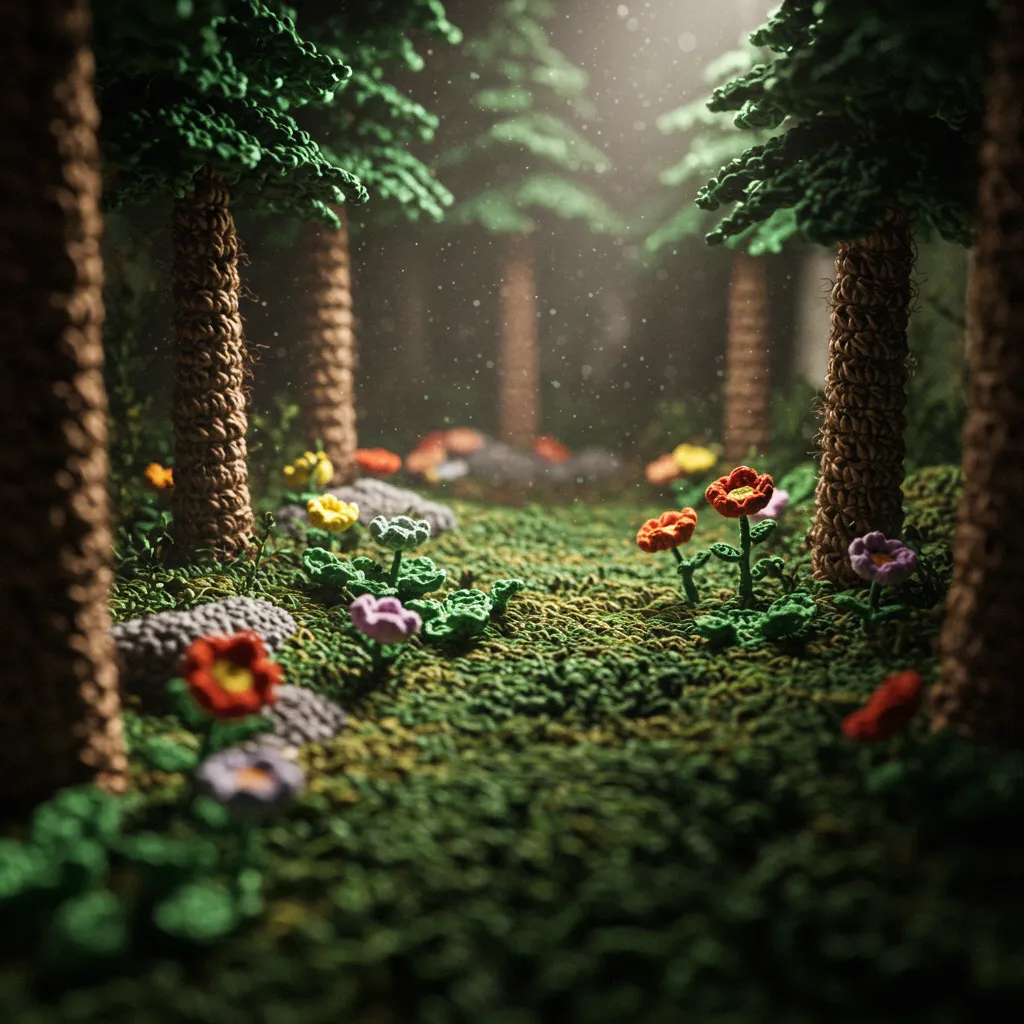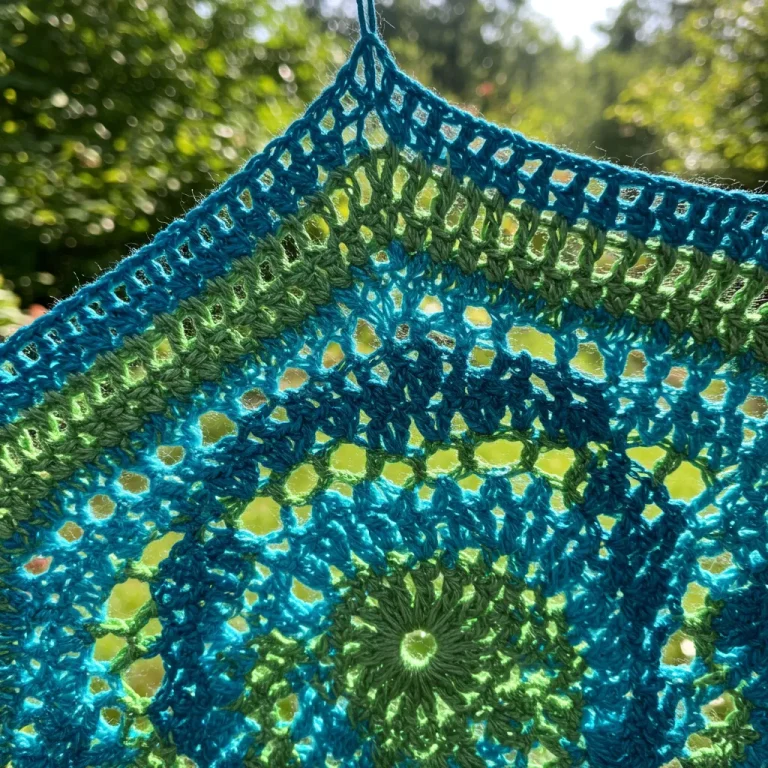Crochet, an art form that has flourished for centuries, is as much about the patterns as it is about the craft itself. From delicate lace to intricate motifs, traditional crochet patterns have their roots in centuries of history, culture, and craftsmanship. Each pattern carries a story—a story about where it came from, who created it, and how it evolved over time. The beauty and complexity of crochet patterns tell us as much about the culture that birthed them as the creativity and skill of the crafters who made them.
So, how did these traditional patterns come to be? Let’s unravel the fascinating story behind some of the most beloved crochet patterns, their origins, and how they’ve stood the test of time.
The Beginnings of Crochet and Pattern Development
The origins of crochet itself are somewhat shrouded in mystery, though many historians agree that the craft evolved in the 16th or 17th century. Crochet may have emerged from various older handcraft techniques, such as “naalbinding” (a technique using a single needle to interlock loops) or “knotting,” a method of making lace-like fabrics. The word “crochet” itself comes from the French term for “hook,” referring to the essential tool of the craft.
As crochet evolved, it became an essential part of everyday life in many cultures, especially in Europe. But it wasn’t until the 19th century that crochet patterns—detailed instructions passed down through generations—began to emerge in printed form. The Industrial Revolution, with its advancements in printing and mass production, made patterns more accessible and sparked an era of crochet creativity that gave rise to many of the traditional designs we recognize today.
The Rise of Lace: The Irish Influence
One of the most well-known and iconic crochet patterns is Irish crochet, which dates back to the mid-1800s. Irish crochet began as a form of lace crochet, originally made by Irish women to supplement their income during the Great Famine. This style of crochet became famous for its use of intricate, floral motifs combined with airy, lacy mesh backgrounds.
Irish crochet is characterized by its elaborate designs—flowers, leaves, vines, and even animals—worked into motifs and then stitched together. The use of fine threads or lace-weight yarns allowed for delicate, airy fabric perfect for elegant clothing or decorative pieces like tablecloths and shawls. What makes Irish crochet especially unique is the “padding” technique, where some of the motifs are raised or “puffed” by crocheting over a cord or thread, adding texture and dimension.
The intricacy and beauty of Irish crochet lace quickly gained popularity throughout Europe and beyond. By the late 19th century, it was considered one of the highest forms of crochet, with delicate lace shawls and intricate doilies becoming highly prized items.
Filet Crochet: The Intersection of Simplicity and Elegance
Another traditional crochet pattern with deep historical roots is filet crochet, which rose to prominence in the early 20th century. Filet crochet is characterized by the use of grid-like meshes and solid blocks of crochet to create simple yet elegant designs. This style is often used to depict pictures or symbols, with each square in the grid representing a block of crochet.
The origins of filet crochet can be traced to the early 1900s, when it was introduced in France and Belgium. The technique gained popularity because it allowed crocheters to create intricate, pictorial designs while still maintaining a relatively simple method. Traditionally, filet crochet was used for tablecloths, curtains, and bedspreads, with patterns ranging from floral designs to elaborate scenes featuring animals or people.
One of the reasons filet crochet remains popular today is its versatility. The grid-based design makes it easy to customize and experiment with new patterns, and the combination of open mesh and solid blocks results in a visually striking yet accessible technique.
Granny Squares: A Symbol of Home and Comfort
No discussion of traditional crochet patterns would be complete without mentioning the iconic granny square. A small, square-shaped motif made of clusters of double crochet stitches, the granny square has become synonymous with comfort, warmth, and nostalgia. This simple yet versatile pattern has been used in countless projects, from blankets to bags, and remains a favorite for both beginners and experienced crocheters alike.
The exact origins of the granny square are unclear, but it is believed to have emerged in the early 19th century. Some theories suggest that it was inspired by traditional patchwork quilts, while others believe it may have evolved from African textile traditions, where motifs were often worked in small, square sections. What’s certain is that the granny square became especially popular in the early to mid-20th century, particularly during the 1960s and 1970s, when it became a symbol of the bohemian, counterculture movement.
The beauty of the granny square lies in its modular design: crocheters can create individual squares in different colors and stitch patterns and then join them together to form larger pieces. This method makes it easy to create custom blankets, pillows, and garments—each piece a unique combination of color and texture.
Motif Crochet: A World of Color and Texture
Alongside the granny square, motif crochet is another traditional pattern style that gained popularity in the 20th century. Motif crochet involves creating small, individual motifs—often in floral or geometric shapes—that are then joined together to form a larger piece. The technique is particularly known for its use in blankets, shawls, and other items where the motifs can be combined in countless ways to create stunning designs.
Motif crochet’s origins can be traced back to the lacework traditions of Europe, but it truly came into its own during the 20th century. The freedom to experiment with color, shape, and stitch patterns made it a favorite among crafters, who could design pieces that reflected their individual creativity. From delicate floral motifs to bold, modern geometric patterns, motif crochet has remained a staple of crochet design for over a century.
The Influence of Culture and Time
The beauty of traditional crochet patterns is that they are deeply entwined with the cultural contexts in which they were developed. Each design—whether it’s the intricate Irish lace, the elegant filet crochet, or the nostalgic granny square—carries the influence of the people, places, and times that shaped it. These patterns are more than just decorative—they’re a window into history, craftsmanship, and the human desire to create something beautiful with one’s hands.
For example, crochet patterns in Scandinavia were often inspired by nature, with motifs depicting snowflakes, flowers, and animals commonly appearing in crochet pieces. In other parts of the world, such as Japan, crochet was often used for practical applications, like making delicate, lightweight garments for warm weather.
The rise of mass-produced textiles in the 20th century led to the decline of handmade crochet for everyday clothing, but the craft has remained alive in cultural artifacts like doilies, tablecloths, and heirloom pieces. Even in the 21st century, many crafters still turn to traditional crochet patterns to create heirloom-quality pieces that can be passed down through generations.
The Timeless Appeal of Traditional Patterns
Though crochet patterns have evolved over time, many of the traditional designs remain as popular today as they were when they first emerged. With the rise of the slow-fashion movement and a renewed interest in handmade goods, crochet has found a new audience, eager to revive and adapt these classic patterns for modern uses.
From vintage-inspired granny squares to modern interpretations of filet crochet, traditional crochet patterns continue to inspire new generations of crafters. What makes these patterns timeless is not just their beauty, but the rich history and cultural significance they carry—each stitch telling a story of the past while remaining relevant and cherished in the present.
Conclusion: A Craft that Transcends Time
The story of traditional crochet patterns is one of creativity, culture, and connection. As we look back at the origins of patterns like Irish lace, filet crochet, and the granny square, we gain a deeper appreciation for the artistry that has been passed down through generations. Whether for personal use, artistic expression, or cultural preservation, these patterns continue to bring people together through the timeless craft of crochet.




